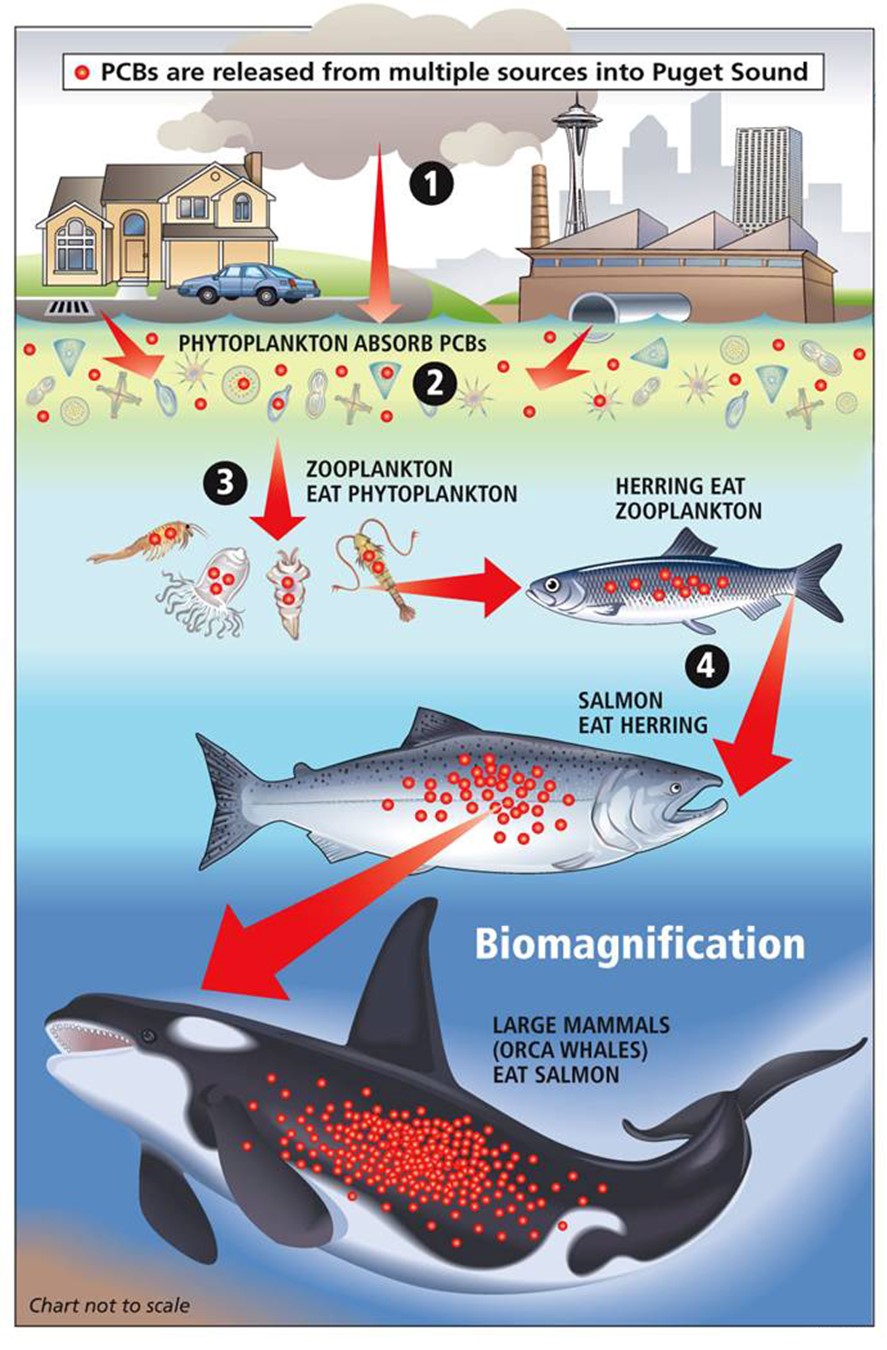Water
Puget Sound Water Quality
In Puget Sound, many river systems have toxic chemical pollution that harm juvenile salmon. As they grow, Puget Sound salmon accumulate toxic chemicals such as PCBs (polychlorinated biphenyls) and PBDEs (polybrominated diphenyl ethers). These chemicals can reduce growth, affect their immune systems, and alter hormone production, all of which can reduce the survival of the salmon. Contaminants are limiting recovery for many Chinook salmon populations in the Salish Sea.1
As predators eat Puget Sound salmon, the health risks of these toxic chemicals are magnified, particularly in Southern Resident orcas and humans. Contaminants in Chinook salmon are above the threshold for concern for human health, according to the Washington Department of Health. Actions planned or underway to address contaminants include banning some toxic chemicals, cleaning up Superfund Sites and sediment, improving monitoring, and implementing recommendations from the Toxics in Fish Implementation Strategy and Washington State Governor’s Southern Resident Killer Whale Task Force.

For decades, coho salmon returning to streams in developed areas in Puget Sound have been dying at high rates before they can spawn. Researchers recently identified 6PPD-quinone, a chemical produced as car tires wear, as the cause of these fish kills.2
Strategies and actions to address water quality impacts on salmon are included in the 2024 Puget Sound Salmon Recovery Plan Addendum, Action Agenda, Toxics in Fish Implementation strategy, and Governor’s orca task force recommendations.
Puget Sound Water Quantity
Adequate water in streams and rivers is required for salmon to swim upstream and spawn, as well as to rear as juveniles. In the past few decades, streamflows during the summer have declined in most river systems in Puget Sound. Streamflows in Puget Sound are affected by a variety of human activities including development, land-use conversion, irrigation, forest practices, water withdrawal, as well as other factors like precipitation variability.
Strategies and actions to address water quantity impacts on salmon are included in the 2024 Puget Sound Salmon Recovery Plan Addendum and Action Agenda. Visit the Puget Sound Vital Signs page for more data and information on Puget Sound Vital Sign indicators related to healthy water quality.
1Washington State Blue Ribbon Panel on Ocean Acidification (2012): Ocean Acidification: From Knowledge to Action, Washington State’s Strategic Response. H. Adelsman and L. Whitely Binder (eds). Washington Department of Ecology, Olympia, Washington. Publication no. 12-01-015, p. 43, https://fortress.wa.gov/ecy/publications/documents/1201015.pdf Accessed on November 9, 2020.
2Tian, Z., Zhao, H., Peter, K. T., Gonzalez, M., Wetzel, J., Wu, C., … & Kolodziej, E. P. (2021). A ubiquitous tire rubber–derived chemical induces acute mortality in coho salmon. Science, 371(6525), 185-189.